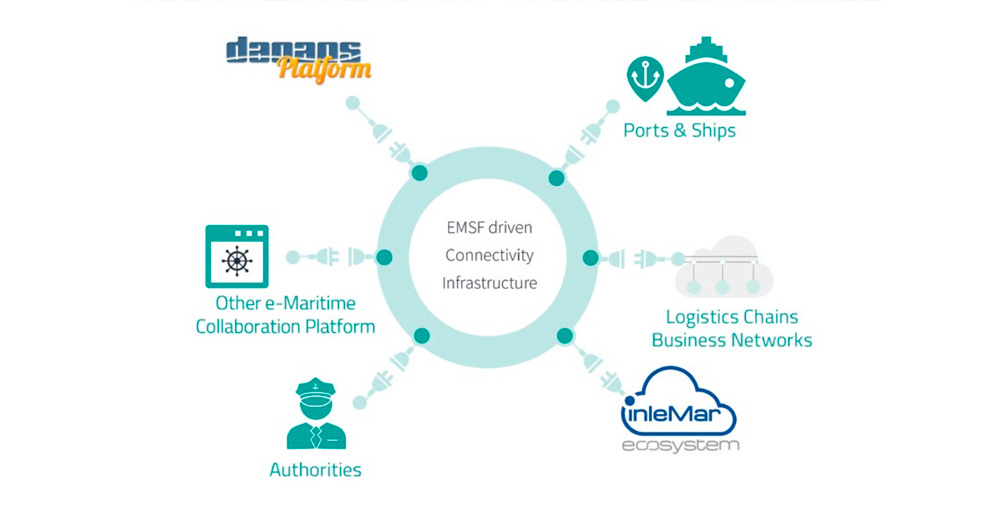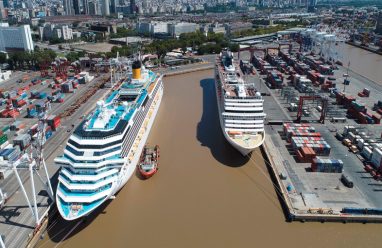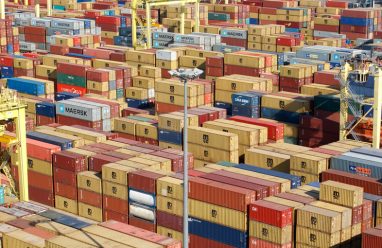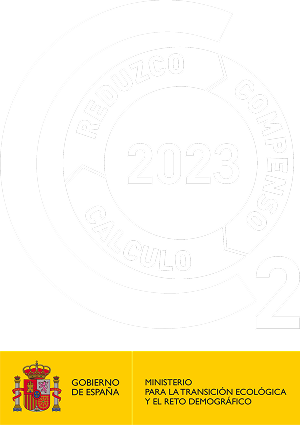One of the objectives of the European Commission is to work on the development and implementation of new information technologies in the maritime-port sector. Consequently, some years ago it introduced the e-maritime concept which refers, in general terms, to the application of the latest information and communication technologies to develop a more efficient maritime transport system. The European Commission’s e-maritime initiative therefore relates to the support for the development of skills, strategies and policies that facilitate the adoption of e-maritime solutions aimed at the development of an efficient maritime transport system that is fully integrated into the European transport system.
The eMAR project is one of the projects financed by the Commission for the deployment and development of the e-maritime initiative, with activities aimed at making headway in defining and establishing a benchmark European Strategic Framework that includes concepts, procedures, standards and technologies that foster cooperation between the different actors involved.
Of the many activities and outputs stemming from the eMAR project, of particular note is the development of the E-Maritime Strategic Framework (EMSF), the development of a technological infrastructure (e-MAR ecosystem) which facilitates the implementation of EMSF, or the definition and description of an index or taxonomy of e-maritime services as a tool to analyse and improve the conditions of the port cluster.
The E-Maritime Strategic Framework (EMSF) is a vision of the future (2020 Horizon) of the electronic interactions between actors from maritime transport by defining and developing a detailed reference model which combines business processes with the exchange of necessary information between the different actors involved and the proposed data model and standard messages to provide support to ship operations, including interaction with the ports and the logistics chains.
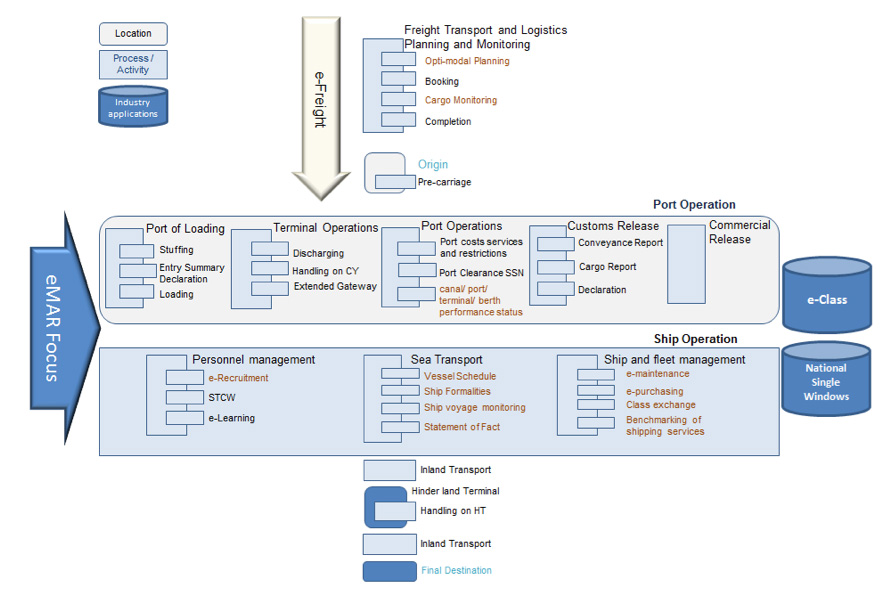
Areas of application of the EMSF
The EMSF models have been created through collaborative effort, integrating existing models in the maritime and logistics sectors, and attending to the general criteria of simplicity, stability, technology independence, usability, etc…
For the modelling, the following standards were used: BPMN, UML and IDEF.
The EMSF complies with all related European and international legislation and regulations (such as EU Directive 2010/65/ on reporting formalities demanded of shipping upon their arrival to or departure from port), as well as other initiatives and projects currently operational such as SafeSeaNet (SSN), e-Customs or the IMO initiatives such as e-Navigation.
The e-MAR ecosystem is a technology infrastructure that facilitates the implementation of EMSF and generally speaking, interoperability and cooperation between the different related systems, software services, intelligent objects and collaborative platforms. The collaboration platform for DANAOS, Inlemar Ecosystem and i-Ship are just some of the solutions developed and tested as part of the project and as an example of the development of this ecosystem.
- The DANAOS collaborative platforms is already being used by a number of shipping companies and it provides users with new electronic services, such as the use of services published by other users (e-procurement, e-invoicing, e-drawings, etc., are just some of the services that are being used across this platform).
- Inlemar Ecosystem is a platform that makes it possible for maritime companies to create their own system environment and interoperable applications that are compatible with the processes and messages defined in the EMSF.
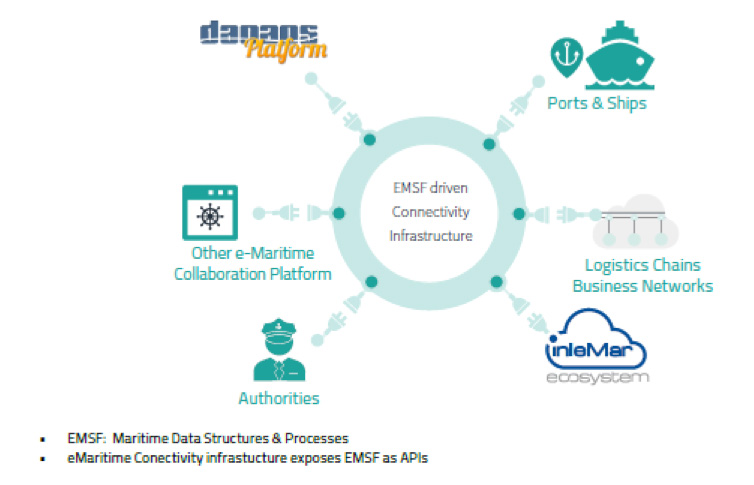
eMar Ecosystem
- I-Ship (Intelligent Ship Reporting) is a new software application that is compatible with the EMSF and enables ship representatives to automatically comply with their duties associated with an inbound ship to European ports and custom authorities (pre-arrival notice passenger and crew lists, notification of dangerous or polluting goods carried on board, notification of waste and residues, information on ship security level, ENS, cargo manifest, FAL forms, berth request).
The e-Maritime Library of Services (eMLS) for port services is a taxonomy or classification and description of electronic services that acts as a support for port maritime operations. In the majority of cases, these services are Port Community Systems – PCS), Single Window facilities or other systems or platforms similar to those of the port logistics cluster.
This e-Maritime Library of Services (eMLS) has been classified and arranged according to a hierarchical structure as per the type of services and the role of the PCS or system providing the same.
The eMLS is a valuable tool for:
- The analysis of the e-maritime situation of a port cluster, mapping the available electronic systems and services.
- The identification of deficiencies and duplications, etc., in the e-maritime services of a port cluster.
- The definition of a roadmap or action plan to follow to develop a port cluster, identifying and prioritizing the electronic services and solutions to develop / improve.
- The development / improvement and / or implementation of new electronic services and solutions that help to increase the efficiency and quality of operations.

